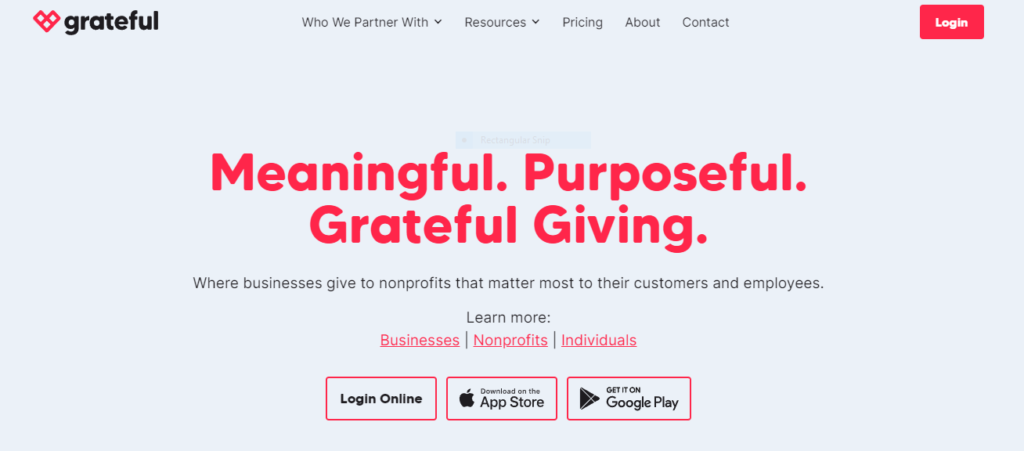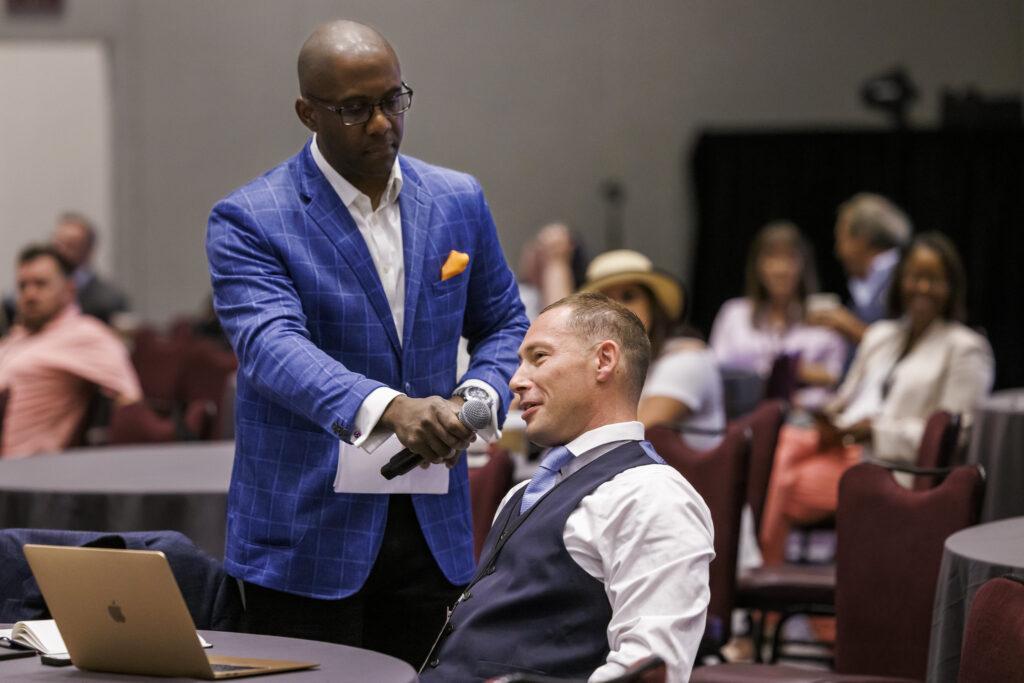Outline: Matt Ostanik’s Entrepreneurship Journey | How Grateful Works | Charity in Action for Businesses | Thoughts on Business Growth | Does your Company Have a Heart? | Why Choose To Start a Business?
If you had to choose between buying from a company that gives back and one that doesn’t, which would you choose? Like many people, you’d probably choose the one that supports a charitable cause.
That’s what Matt Ostanik is betting on as founder and CEO of Grateful, a platform for companies to automate giving to nonprofits. A four-time serial entrepreneur, Ostanik launched the Grateful platform with the goal of helping nonprofits amplify their fundraising efforts. All the while, it’s helping companies give back to causes that their customers, clients, and employees care about the most.
Matt Ostanik’s Entrepreneurship Journey
Before starting Grateful, Ostanik was no stranger to tech startups. He originally went to school for architecture, wanting to design buildings for a living. He finished his degree and worked at an architecture firm, where he came up with the idea to create a software tool for architects.
Ostanik left the architecture firm to start his own business and grew it into a $10 million company he sold. Today, that first software product he developed is now a part of Oracle’s software division.
“I love creating things — turning ideas into reality,” he quips.
Still, Ostanik has found himself ahead of the curve on more than one occasion. You need only look back on his architecture software and other previous ventures to see that this is true.
Now, around 17 years later, he’s still making a difference in the world of technology startups. This time, it’s also making a difference for nonprofits across the country.
How Grateful Works

Companies pay a subscription fee to join the Grateful platform. They can then decide how they want to give back. For instance, they might donate a percentage or a dollar amount for every sale.
From there, when someone completes a purchase or reaches a certain milestone, they can choose a charity to support. Grateful’s database of potential recipients includes all 2 million U.S. 501(c)3 nonprofits, making it easy to find a worthy cause.
As for the donations, they are automated with each purchase, and 100% of them go to charity. Grateful’s subscription fee covers the cost of inclusion on the platform.
Charity in Action for Businesses
Ostanik mentions a Florida-based gym chain on the Grateful platform. The gym donates a percentage of membership fees toward its members’ favorite charities. Members feel good about sticking with a gym that cares — a socially good company, if you will. And the gym stands to benefit because people are more likely to retain their memberships than go to another gym that lacks the same socially good values.
It makes sense that gym-goers and other charitable givers would choose to spend their dollars with a socially conscious company. In the United States, 160 million people donate to charities each year. So, individuals who already give back will likely buy from a company that supports a cause they care about.
“We find that customers that participate in giving programs like that end up spending 17% more with your business,” Ostanik adds. In effect, it’s a win-win-win: Both businesses and customers can give back, and nonprofits find incremental growth in donations.
“It pays for itself,” adds Ostanik about the subscription fee that companies pay.
Often, companies dedicate part of their marketing or human resources budget to the program. The program becomes a marketing tool in itself because it drives more business. Customers are more loyal and wish to spend more, knowing their dollars are making a difference.
Matt Ostanik Thoughts on Growing the Business
Like any startup venture, Grateful is on a journey of discovery. “It’s still relatively new and evolving,” says Ostanik.
Part of that journey includes finding the best ways to market and sell the platform, although Ostanik says the sales process isn’t especially tricky. Most people can get on board with the idea of charitable giving.
The more challenging part, he says, is selling something when people aren’t necessarily shopping for it. While Amazon.com has been in the charitable giving game for years now with its AmazonSmile program, the concept is still relatively new.
Moreover, most businesses aren’t out there looking for that particular solution, adds Ostanik. So, there is a bit of an adoption curve where they need to track down people who love the concept and want to be a part of it. Many companies will wait until widespread adoption has been achieved, preferring not to be the first to jump in.
Does your Company Have a Heart?
Perhaps this is one of the reasons Ostanik can be selective about which companies he works with. “We look for companies that already have a heart,” he explains. He’s translated that sentiment into a new website called SociallyGoodCompanies.org, a directory of companies that believe in social good.
For a company to create a profile on Socially Good Companies, they must adequately address four key questions:
- Is generosity/giving back something you believe in — i.e., a part of your values?
- Do you do any company-driven charitable giving?
- Do you do any sort of employee giving, where you’re giving to charities your employees care about?
- What about customer giving — enabling customers or clients to give to something they support?
Most companies say they support charitable giving, but not all do so in practice. Answering these questions is a good starting point for understanding a company’s level of commitment to social good.
Why Choose To Start a Business?
As a four-time entrepreneur, Ostanik knows a thing or two about why people choose to start a business. It comes down to the following three factors:
- They want control and freedom. Whether it means control over their schedule or having the freedom to fail or succeed as big as they wish, people want to have the choice.
- Money. They want to make the income they need to live the lifestyle they want, as well as create generational wealth.
- They want to make a difference.
Clearly, Ostanik has the formula down.
To learn more about Grateful and the beneficiaries of their efforts, head over to BeGrateful.org.

About Matt Ostanik
Matt Ostanik is an architect, entrepreneur, creator, and builder who has founded four companies. His current company, Grateful, is a platform that helps socially good businesses participate in “Grateful Giving” by donating to their customers’ and employees’ favorite nonprofits. He believes that in today’s world, social good has never been more important and is a powerful tool for businesses to increase customer retention and employee engagement.







